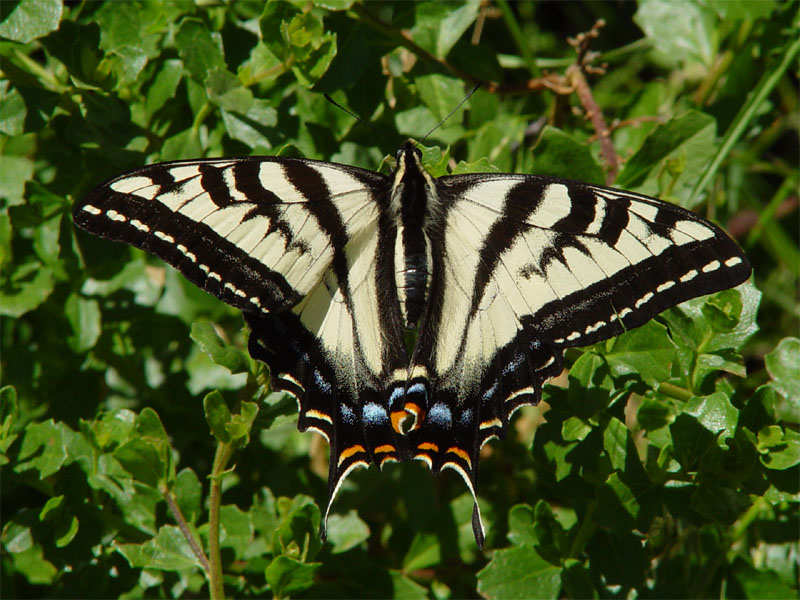- Papilio eurymedon
Taxobox
name = "Papilio eurymedon"
status =

image_width = 250px
regnum =Animal ia
phylum =Arthropod a
classis =Insect a
ordo =Lepidoptera
familia = Papilionidae
genus = "Papilio "
species = "P. eurymedon"
binomial = "Papilio eurymedon"
binomial_authority ="Papilio eurymedon", the pale swallowtail or pallid swallowtail is a relatively common
swallowtail butterfly throughout most of the western United States and southernBritish Columbia . It is present from the coast to westernMontana andWyoming to northernNew Mexico . It is absent from most ofNevada and westernUtah . It prefers open woodlands and forest clearings, especially near permanent bodies of water such as ponds, but also urban parks and occasionally is seen in suburban areas. Though not as common as the western tiger swallowtail, the pale swallowtail can be seen in large numbers at puddling parties where up to a dozen or more males may be seen gathered. There they join other species to sip water from damp soil to obtain nutrients for mating. Their appearance is quite similar to that of the western tiger swallowtail except they are a white-cream color or very pale yellow. Some pale swallowtails also have differing amounts of red-orange patches on the wings just above the tail as well as on the . Tiger stripes and borders are thicker than those of western tiger swallowtails. The wingspan is typically 3.5 to 4.5 inches.The pale swallowtail has a single brood throughout most of its range, but two or more along the Pacific Coast. Adults fly from April to October and are most common in May and July.
Caterpillar s enter theirpupa stage in the fall and overwinter before emerging as adults. Eggs are laid singly on plant hosts which include members of the "Ceanothus " family, includingbuckbrush ,mountain balm , andmountain lilac , as well as red alder, ccean spray, bitter cherry, and Serviceberry species. Caterpillars are plump green with a single yellow band behind thethorax . They have two eye-shaped spots on the upper thorax which may help frighten predators. Like most swallowtails they have red wishbone shaped organ called theosmeterium which pops out from behind the head and releases a foul odor to warn off predators. Caterpillars turn brown just before the fifthmoult . The pupa is brown and looks like a piece of bark. As they pupate they face upright, secure the tip of the abdomen to a branch with asilk thread, and hang freely.
Wikimedia Foundation. 2010.
